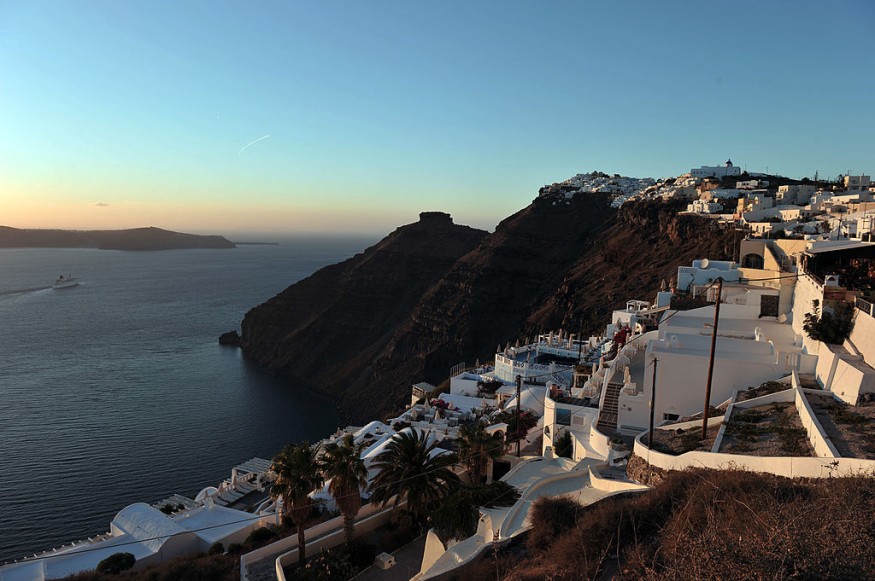
Experts said that the Santorini volcano had ejected pumice and ice that were 15 times more than what was unleashed by the Hunga Tonga-Hunga Ha'apai Volcano in 2022.
They said that Santorini's eruption took place 500,000 years ago.
Eruptions From Island Arcs
Scientists pointed out that the large explosive volcanic eruptions from island arcs pour pyroclastic currents into marine basins, impacting ecosystems and generating tsunamis that threaten coastal communities and infrastructures.
The Santorini eruption ejected at least 21.6 cubic miles (90 cubic kilometers) of volcanic rock and ash, while the Tonga eruption of 2022, by comparison, produced 1.4 cubic miles (6 cubic km) of debris.
The Santorini volcano last erupted in 1950, emitting lava that did not pose a significant threat. However, the magma chamber is seen to continue to feed eruptions of lava and small explosive eruptions for the coming decades and maybe even centuries.
The risk assessments require robust records of such highly hazardous events, which is challenging as most of the products lie buried under the sea.
Recently, experts have reported the discovery by IODP Expedition 398 of a giant rhyolitic pumice deposit placed at water depths of 200 to 1000 m during a high-intensity, shallow submarine eruption of ancestral Santorini Volcano.
They stated that pyroclastic currents discharged into the sea transformed into turbidity currents and slurries, forming a >89 ± 8 km3 volcaniclastic megaturbidite up to 150 m thick in the surrounding marine basins, while breaching of the sea surface by the eruption column laid down veneers of ignimbrite on three islands.
The study stressed that the eruption was one of the largest recorded on the South Aegean Volcanic Arc as it also highlighted the hazards from submarine explosive eruptions.
The processes and impacts of submarine explosive eruptions are poorly understood in comparison to their terrestrial equivalents, according to the study.
However, submarine calderas are common on island arcs and shallow submarine eruptions can be very violent as shown by that of Hunga Tonga-Hunga Ha'apai Volcano in 2022.
Pyroclastic currents from such eruptions had poured into the sea, entraining water and transforming into water-supported gravity flows.
Although the resulting deposits can be studied in ancient successions, those within marine sediments around modern island volcanoes have been difficult to access except by deep drilling.
Read Also : Eruption of Hunga Tonga-Hunga Ha'apai Volcano In 2022 Spawns New Studies About Climate Change
Submarine Volcanoes
The South Aegean Volcanic Arc lies in the heart of Europe, and its submarine volcanoes are potentially a major hazard.
While the eruptive history of the arc has been investigated through onland mapping and marine tephrachronology, the record of submarine volcanism has only been broadly constrained by offshore seismic imagery.
From 2022 to 2023, IODP Expedition 398 drilled the marine rifts of the central island arc to depths of up to 900 m below the seafloor in order to ground-truth the seismic stratigraphy and to use the basin sediments as time capsules to recover a complete record of Neogene-Quaternary volcanism.
This was also done to seek deposits from past submarine eruptions.
The twelve drill sites lie in and around the Christiana-Santorini-Kolumbo Volcanic Field (CSKVF), which hosts Santorini caldera.
The CSKVF is situated within a 100-km-long, NE-SW rift system that cuts across the volcanic arc and consists of three basins (Anhydros, Amorgos, Anafi) containing up to 1400 m of sediments and volcanic above continental basement.
© 2025 NatureWorldNews.com All rights reserved. Do not reproduce without permission.





